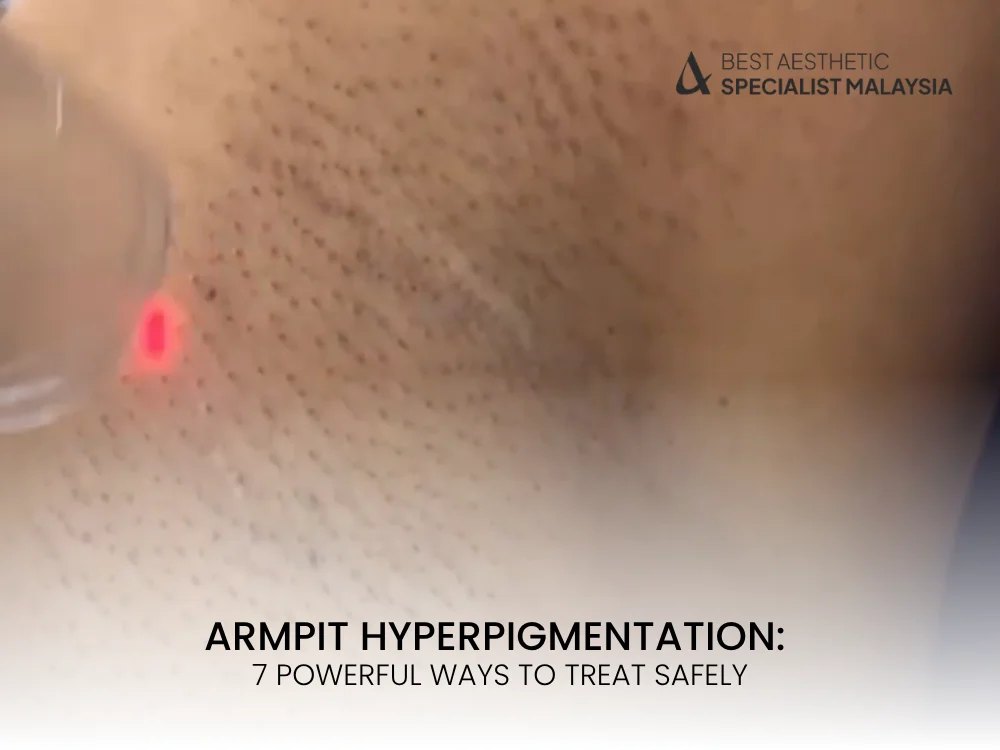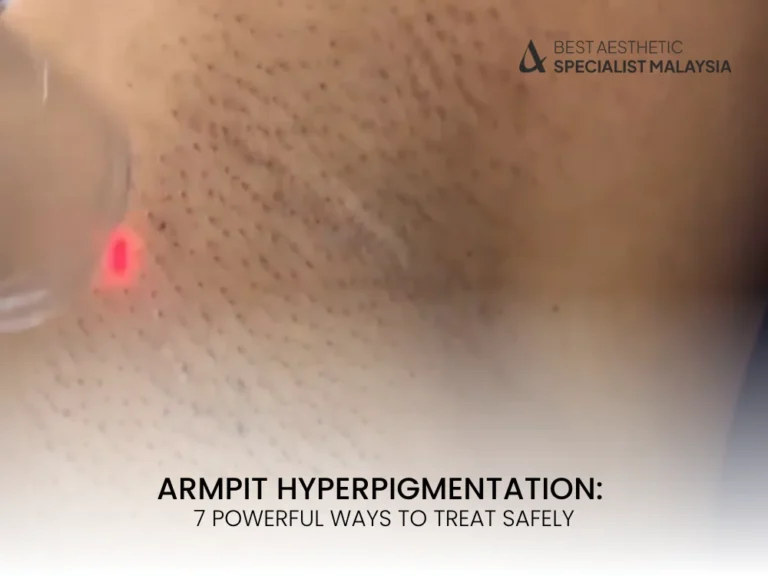Armpit hyperpigmentation is a common skin condition characterized by the darkening of the skin in the underarm area. It can affect both men and women, and though not typically a health concern, it can lead to self-consciousness and discomfort.
This discoloration often appears as brown or gray patches and may be caused by a variety of factors ranging from genetics to lifestyle habits. The good news? Armpit hyperpigmentation can be treated and managed effectively with the right approach and care.
Common Causes of Armpit Hyperpigmentation
Friction and Shaving
Frequent shaving can lead to micro-abrasions, which trigger melanin production as part of the skin’s healing response, resulting in hyperpigmentation. Tight clothing that causes friction also contributes to darkened underarms.
Deodorants and Antiperspirants
Certain chemical ingredients in deodorants—especially alcohols and fragrances—can irritate sensitive underarm skin, leading to inflammation and subsequent darkening over time.
Hormonal Changes
Hormonal fluctuations, particularly in women during pregnancy or due to conditions like PCOS (Polycystic Ovary Syndrome), can increase melanin production, making armpit hyperpigmentation more noticeable.
Acanthosis Nigricans
This is a skin condition linked to insulin resistance, often seen in people with obesity or diabetes. It causes thick, velvety, and dark skin patches in body folds, including the underarms.
Post-Inflammatory Hyperpigmentation (PIH)
After irritation or inflammation—caused by waxing, ingrown hairs, or allergic reactions—the skin may produce excess melanin as it heals, leading to armpit hyperpigmentation.

7 Effective Treatments for Armpit Hyperpigmentation
1. Exfoliation with Natural Acids
Regular exfoliation helps remove dead skin cells that contribute to dullness and discoloration. Using products with alpha hydroxy acids (AHAs) like glycolic acid or lactic acid can brighten the underarm area.
- Use 2–3 times per week
- Avoid if skin is broken or irritated
- Combine with moisturizer to prevent dryness
2. Topical Ingredients That Target Pigment
Look for creams and serums containing:
- Niacinamide (Vitamin B3) – Reduces inflammation and pigmentation
- Vitamin C – Brightens and fights free radical damage
- Kojic Acid – A natural compound that inhibits melanin production
- Licorice Extract – Soothes skin and helps lighten dark spots
These ingredients are commonly found in dermatologist-recommended products for treating armpit hyperpigmentation.
3. Gentle Hair Removal Alternatives
Replace shaving with alternatives like:
- Waxing (with proper care afterward)
- Laser hair removal (long-term solution)
- Hair removal creams (if skin tolerates well)
Reducing mechanical irritation can prevent pigmentation from worsening.
4. Natural Remedies for Armpit Hyperpigmentation
Home remedies can be gentle and effective:
- Aloe Vera Gel – Soothes skin and promotes healing
- Potato Juice – Contains natural bleaching enzymes
- Lemon + Honey Mask – Honey moisturizes while lemon acts as a mild bleaching agent (use sunscreen as lemon can increase sun sensitivity)
Apply 2–3 times a week for visible improvement.
5. Clinical Treatments
If home care fails, a dermatologist might suggest:
- Chemical Peels – AHAs or BHAs professionally applied to remove dark skin layers
- Laser Therapy – Targets deeper pigmentation
- Microneedling – Promotes skin renewal and can lighten pigment over time
Always consult a licensed professional for clinical treatments.
6. Lifestyle Changes That Support Skin Health
- Wear breathable fabrics like cotton
- Avoid synthetic deodorants with alcohol or strong fragrances
- Keep the area dry and clean
- Maintain a healthy diet to support skin regeneration
Small daily changes can significantly reduce armpit hyperpigmentation over time.
7. Treat Underlying Health Conditions
If the darkening is related to hormonal imbalances or insulin resistance, it’s crucial to manage the root cause. A medical evaluation may be necessary to address issues like PCOS, obesity, or diabetes which often manifest through skin changes.
How Long Does It Take to See Results?
Treating armpit hyperpigmentation is a gradual process. With consistent care:
- Natural remedies may show results in 4–8 weeks
- Topical treatments can take 6–12 weeks
- Clinical interventions may provide faster results but require professional guidance
Consistency, patience, and gentle skincare are key to achieving even-toned underarms.
Is Armpit Hyperpigmentation Permanent?
In most cases, no. With the right treatments and lifestyle adjustments, armpit hyperpigmentation can be significantly reduced or even completely reversed. However, some deeper pigmentation caused by chronic health conditions may require ongoing management.
Myths About Armpit Hyperpigmentation
- Myth: It only affects people with darker skin.
While more visible in medium to dark skin tones, armpit hyperpigmentation can affect any skin type. - Myth: Deodorants alone cause dark armpits.
It’s a combination of factors—shaving, friction, product irritation, and health conditions. - Myth: Scrubbing will remove the darkness.
Over-scrubbing can worsen inflammation and make hyperpigmentation worse. Gentle care is better.
FAQs About Armpit Hyperpigmentation
1. What causes armpit hyperpigmentation to worsen over time?
Consistent irritation from shaving, tight clothing, and harsh deodorants can worsen the condition. Hormonal shifts and untreated health issues may also contribute.
2. Can armpit hyperpigmentation go away on its own?
Mild cases may improve without intervention if triggers are removed, but most cases require targeted skincare or treatment.
3. Are there over-the-counter creams for armpit hyperpigmentation?
Yes. Look for products with ingredients like niacinamide, kojic acid, or vitamin C specifically formulated for sensitive skin.
4. Is laser treatment safe for underarms?
When performed by certified professionals, laser treatments are generally safe and effective for armpit hyperpigmentation.
5. Can diet affect skin pigmentation?
Absolutely. A nutrient-rich diet supports skin regeneration, and hydration aids in maintaining skin elasticity and tone.
6. Should I stop using deodorant if I have dark armpits?
You don’t have to stop entirely. Switch to natural, alcohol-free, or baking soda-free formulas to minimize irritation.

